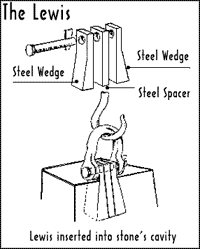VSL Regalia
Brethren Serving Brethren
The Lewis Jewel
The Lewis Jewel may be worn by a Mason, if at the time of his Initiation, his father was a Mason in good standing (the initiate of a deceased father in good standing at the time of his demise would also qualify).
The Lewis Jewel consists of two bars or more connected by chains:
-
The upper bar contains the name of the father and date of his Initiation.
-
The lower bar, the name of the son and date of his Initiation.
We can provide Lewis jewels up to 5 bars.
We have to import these jewels from Canada so there is normally a 4-6 week turn around from order.
If you want within 1-2 weeks then there is an additional charge of £35 for airfreight delivery.
(We do not make anything from this)
Engraving offered free at time of ordering or alternatively can also be done at an additional cost later once received.
2 bar Jewel £100
3 bar Jewel £110
4 bar Jewel £120
5 bar Jewel £140
A LEWIS is a simple but ingenious device employed by operative Masons to raise heavy blocks of dressed stone into place. It consists of three metal parts: two wedge-shaped side pieces, and a straight centre piece, that fit together (tenon). A dovetailed recess is cut into the top of the stone block (mortise). The two outer pieces are inserted first and then spread by the insertion of the centrepiece. The three parts are then bolted together, a metal ring or shackle is attached and the block is hoisted by hook, rope and pulley. By this means, the block is gripped securely. Once set in its place in the structure, the lewis is removed leaving the upper surface smooth with no clamp or chains on the outside to interfere with the laying of the next course. Our ancient operative brethren used this tool as early as the Roman era. Stones with the mortised cavity for the insertion of a lewis have been found in Hadrian's Wall built c. 121-127 CE. Archaeologists have found further evidence of its use by the Saxons in England in buildings constructed in the 7th century. The origin of the term 'lewis' for this device is uncertain. Some authorities trace its etymology to the French levis from lever – to lift, hoist, raise; and louve – a sling, grip or claw for lifting stones.

